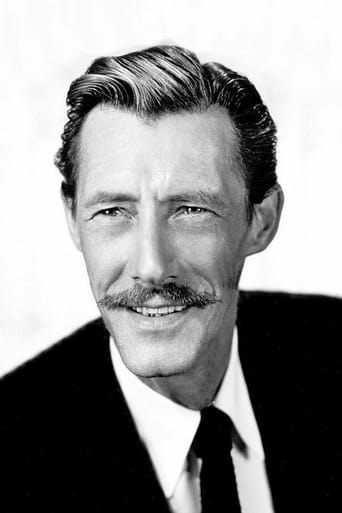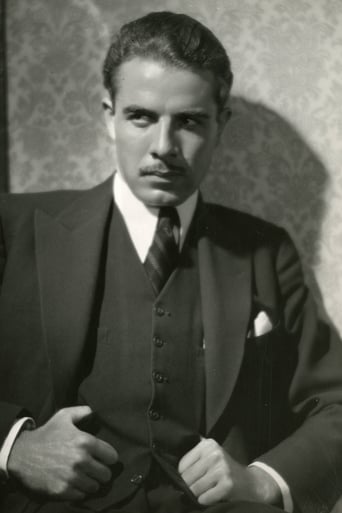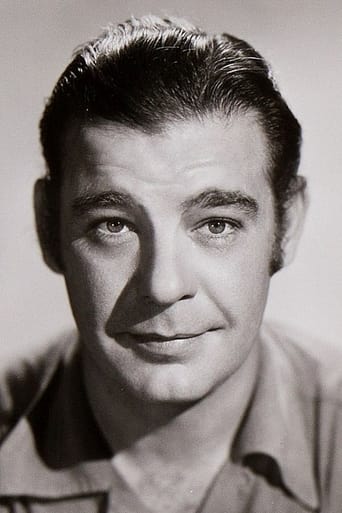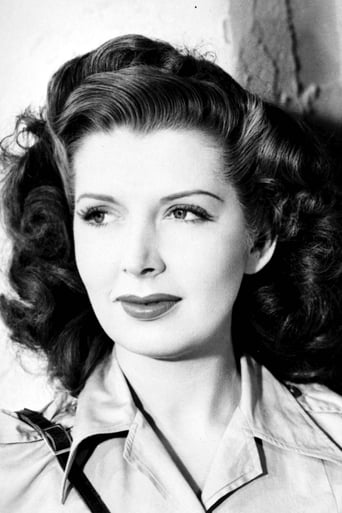Leofwine_draca
A hugely entertaining slice of Universal hokum, this is from the period in the 1940s where they tried to increase interest in the films by having all the monsters appear together. The cast list of this film reads like a who's who of classic horror actors. They're all present and correct, apart from Bela Lugosi, who is missed in the proceedings; John Carradine is a good actor but no match for Lugosi's presence as Dracula.The main actor, Onslow Stevens, who plays the doctor, is great when he turns mad, and Lon Chaney Jr. is also given a large part in his most famous role. The only monster receiving a raw deal is Frankenstein's Monster, once again played by Glenn Strange. He is only revived in the last five minutes of the film before being apparently killed by fire.The film contains almost constant action, going back and forth between the three monsters. The doctor even has a hunchbacked assistant, although she is female this time around. There are many special effects, and those where Dracula turns into a bat are probably the most fun, although Chaney does get to turn into a werewolf again. With a film like this, typically not much thought is given to plot, but who needs plot when you have a synopsis like this? If you're into the Universal monsters then you really do have to see this film for the sheer fun value.
ferbs54
Released in December 1945, "House of Dracula" is the penultimate entry in Universal's classic series of monster movies, stretching from 1931's "Dracula" and "Frankenstein" all the way to 1948's "Abbott and Costello Meet Frankenstein." Like its immediate predecessor, 1944's "House of Frankenstein," and the 1948 film, it is an all-star monster mash-up, featuring Dracula for the fifth time (after the original, 1936's "Dracula's Daughter," 1943's "Son of Dracula" and the '44 film), Franky for the seventh time (after the 1931 film, 1935's "Bride of Frankenstein," 1939's "Son of Frankenstein," 1942's "Ghost of Frankenstein," 1943's "Frankenstein Meets the Wolf Man" and the '44 film), and the Wolf Man for the fourth time (following 1941's original classic "The Wolf Man," "Frankenstein Meets the Wolf Man" and the '44 film). Whew! Clocking in at a brief 67 minutes, this entry certainly makes for a compact addition to this legendary series, and like all the others, makes for a splendid entertainment for both the kiddies and their parents.In this one, Lawrence Talbot (wonderfully played, as always, by Lon Chaney, Jr.) visits still another medical expert to help rid himself of his lycanthropic curse. He arrives at the castle home of Dr. Franz Edelmann (Onslow Stevens) in the fictitious hamlet of Visaria (a locale that, due to the townspeople's Teutonic names and the doctor's oceanfront pile, the viewer must assume to be in northern Germany), only to learn that the good doctor is busy with another patient. Just the night before, by an incredible coincidence, one Baron Latos had appeared in the doctor's sitting room in the wee hours of the A.M. The stranger was received by the doctor with amazingly good grace (how many of us would engage a top-hatted stranger with such accommodating conversation at 5 A.M.?) and soon revealed that he was no less a personage than Count Dracula himself, seeking a cure for his own monstrous curse. (As in the '44 film, the old neck nosher is played here by John Carradine, with suavity to spare.) Edelmann eventually agrees to take both these new patients on, and his lot is made even more problematic when he discovers--in still another fantastic co-inkydence, one that propels the film into the realms of the surreal--the dormant body of the Frankenstein monster (Glenn Strange, for the second time) in the sea caves beneath his home! (At this point, the viewer might understandably begin to wonder when the Invisible Man and the Mummy will be making their entrances!) And life grows even more harried for the put-upon doctor, when he realizes that the sneaky count has turned him into one of the bloodsucking undead...and with an overriding desire to revive the Frankenstein monster...."House of Dracula" (a more appropriate title would be "House of Edelmann," of course) is a remarkable film for several reasons. In it, both Dracula AND the Wolf Man profess a desire to be cured of their earthly lot (Dracula seeks a "release from a curse of misery and horror against which I'm powerless to fight alone"; Talbot bemoans his "life of misery and despair"), and for the first time, a scientific explanation is given for both of their maladies (a blood parasite and a "different species of antibodies" for the vampire; "pressure upon certain parts of the brain" coupled with self-hypnosis and hormonal changes, in the case of Talbot). Even more startling, perhaps, is the series' first FEMALE hunchback: Nina, the assistant of Dr. Edelmann, played by Jane Adams. Although grouped with the other monsters in the film's promotional poster under the tagline "The Devil's Own Brood," Nina is actually the kindest, most sympathetic character in the entire film, and despite her deformity, prettier than her fellow assistant Miliza (Martha O'Driscoll). The fact that Nina IS such a sympathetic character only makes her ultimate fate seem like an undeserved gyp. Continuing its pseudoscientific bent, "House of Dracula" gives us some plausible solutions for the monsters' problem: blood transfusions for the count, and utilizing the spores of the "clavaria formosa" plant, to effect a reshaping of the cranial cavity, for Talbot. Besides these novel plot points, the film boasts an oftentimes remarkable use of light and shadow (DOP George Robinson had previously lent his considerable skills to films such as "The Mummy's Tomb," "Franky Meets the Wolf Man," "Son of Dracula," "Cobra Woman" and "House of Frankenstein"). The special FX by John P. Fulton are just fine--including Larry's transformations, the Drac-to-bat changes, and especially the beautiful ocean backdrop behind Edelmann's castle--while the film's direction, by Erle C. Kenton ("Island of Lost Souls," "Ghost of Frankenstein," "House of Frankenstein"), is taut and atmospheric. The film boasts several memorable scenes, including Talbot's initial jail-cell transformation; Miliza playing increasingly haunting piano music, as Dracula's spell overwhelms her; Edelmann watching his mirrored reflection slowly fade and disappear, a telltale sign of his new vampiric condition; and a surrealistic fantasy/dream sequence that Edelmann suffers. On the down side, it can fairly be said that Carradine is an unusual casting choice to play the count, that Dracula is too easily disposed of, and that the film itself wraps up way too abruptly. And (spoiler ahead) how is it even possible for the vampire Edelmann to be done in by conventional bullets? Quibbles aside, though, the film is as fun as can be, and even lets the newly cured Lawrence Talbot enjoy a happy ending, for a change! Of course, Larry would soon be in for a fairly serious relapse, as the events of "A & C Meet Franky" would clearly detail. Here's hoping that he at least had three good years between these two films....
TheRedDeath30
A sequel to HOUSE OF FRANKENSTEIN (which makes this, simultaneously, Wolf Man 4, Frankenstein 7 and Dracula 5), this would prove to be the last horror outing for these classic Universal monsters. Though they would be revived for Abbott and Costello, they would never appear again in a strictly "scary" movie. As a sequel to HOF, it is also, pretty much, a repeat of a lot of the plot points of that movie, as well as recycling ideas from many of the classic Universal movies.Somehow, Dracula and Wolf Man have escaped their inexplicably escaped the deaths we saw in the previous movie. Both show up at the home of a doctor, seeking out a cure for their ailments. In the case of the Count, it is a ruse to get closer to a female assistant. That is not discovered until our good doctor has already performed blood transfusions in an attempt to cure him. Eventually, the vampire reveals his evil self and is eliminated. This comes much too soon in the movie and, just like HOF, they miss a golden opportunity because Dracula never really shares a scene with any other monster.Larry Talbot is a broken record at this point in the Universal cycle. Sad, because he is my favorite of the monsters, but he becomes like a teen girl in a bad family drama, always moaning about how terrible his life is. After attempting suicide, this leads to the inevitable discovery of the Frankenstein monster. Not long after, Talbot is cured of his affliction, which is a shame because he never shares a scene with either Drac or Frank and the movie really grinds to a halt with the lack of any monster once he's cured.The main plot point is our doctor, who you will remember performed blood transfusions on a vampire. Somehow, this doesn't lead to him becoming a vampire, but rather an occasional maniac, more like a meth addict strung out on drugs. His evil mind eventually decides to resurrect Frankenstein which leads to about 2 minutes of actual Frank footage, most of which is recycled from previous movies.The main problem here is a lack of any atmosphere or scares. The movie is just sort of going through the motions at this point, churning out low budget filler that Universal knew would attract an audience regardless. Mind you that I am not saying this is a terrible movie. It's still got some fun to be had and I am a brainless sheep who will pretty much watch anything with these monsters in it, but it's definitely one of the weakest of all the Universal sequels.










